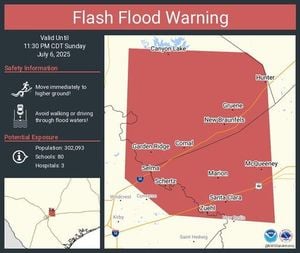A magnetic storm is set to hit the Earth starting April 22, 2025, driven by a significant coronal hole on the Sun. This storm, expected to last for about two days, will bring geomagnetic disturbances to the Novosibirsk region, with a peak intensity classified as level G2.
According to experts from the Laboratory of Solar Astronomy IKI RAN and ISZF SO RAN, the storm will begin in the evening of April 22, with its peak occurring in the early hours of April 23. The forecast indicates that the strength of the magnetic storm will range from weak to moderate, but there remains a possibility of even stronger geomagnetic activity.
Initially, scientists anticipated that the geomagnetic impacts would reach Earth on Monday, April 21, but they later adjusted their predictions to a day later. The coronal hole, which has grown significantly in size over the past few days, is responsible for the fast solar wind that will trigger these disturbances. As the situation stands, the likelihood of the storm occurring is estimated at a staggering 99.9%.
"On the Sun, an extraordinarily large coronal hole has formed, producing fast solar wind," the Laboratory of Solar Astronomy stated. They noted that while the hole initially posed no threat, its sudden expansion has placed Earth within its influence.
The intensity of the magnetic storm is expected to peak at around 6 on the geomagnetic scale, which corresponds to level G2. However, experts have warned that the strength of the storms could potentially exceed this prediction, with a 10% chance of storms reaching levels three and four.
As for the duration of the storm, it is expected to last approximately two days, beginning after 12:00 PM Moscow time on April 22. Geomagnetic disturbances will persist throughout that day and into April 23, with the Earth's magnetosphere anticipated to return to a calm state only after 9:00 PM on Wednesday.
Experts also caution that coronal holes can produce unpredictable storms, sometimes lasting longer than expected. However, in this specific instance, they consider the probability of the storm extending beyond three days to be negligible.
In light of the impending magnetic storm, health professionals recommend several measures to mitigate its effects. They advise maintaining a regular sleep schedule, avoiding excessive alcohol and fatty foods, staying hydrated, and ensuring physical activity and fresh air. These practices can help individuals maintain their well-being and reduce the potential impacts of geomagnetic storms.
As we approach the end of April, the scientific community remains vigilant. While no further magnetic storms are currently forecasted for late April, there are indications that new geomagnetic disturbances could arise in early May. This ongoing monitoring highlights the dynamic nature of solar activity and its potential effects on Earth.
The upcoming magnetic storm serves as a reminder of the powerful forces at play in our solar system and their ability to influence life on Earth. As scientists continue to study these phenomena, they provide crucial information that helps us prepare for and understand the implications of such cosmic events.





